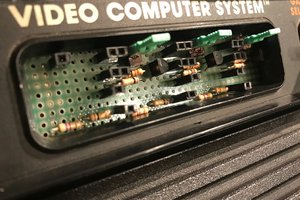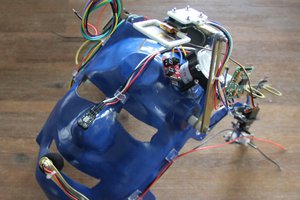The project consists of:
1. An arbitrary number of LM35 temperature sensors, together with cables and connectors. I chose 4-pin mini-DIN (same as used in S-Video) because they were cheap, small enough and practical. I went for five sensors max, but I can add more sockets if I need to.
The LM35 is an analog sensor which outputs DC voltage of 0+10mV/°C (there's also a LM34 which measures in °F). So, 20°C will be output as 200mV. The LM35 can also measure negative temperatures if its output is pulled down to a negative voltage through a resistor, with 50µA flowing at 0°. If using -5V, 100k should be used.
2. A rotary switch for sensor selection, 2 pole, n throw (where n is a number of sensors). It switches the VCC and ouput lines of the sensors. The ground is always connected.
3. A range switch. The millivoltmeter module (Meratronik V628) can work with different ranges and precisions, I used the 400mV (more precise) and 4V ranges. Selection is made with a pair jumpers inside the unit, one for the decimal point position and the other one for choosing a resistor in a feedback divider in the input amplifier. I broke them out to a DPDT pushbutton switch.
4. An optional zero/calibration switch, grounding the millivoltmeter input, used for calibrating the meter.
5. +/-5VDC regulators for the LM35. I used the jellybean 7815 and 7915, and some decoupling caps.
6. A digital millivoltmeter module. I had a Meratronik V628 kicking around in my lab, decided to use it because it can measure both positive and negative voltages, which made it possible to use it for measuring negative temperatures. The millivoltmeter has a built-in transformer power supply with +/-15V DC, which I used for powering the voltage regulators.
7. The enclosure was reused from the pH meters, using embossed labels to cover the unused holes.
 Keri Szafir
Keri Szafir

 Dan Chelger
Dan Chelger
 jaromir.sukuba
jaromir.sukuba
 M. Bindhammer
M. Bindhammer
 Varun Suresh
Varun Suresh
Love the embossed labels. Outstanding!